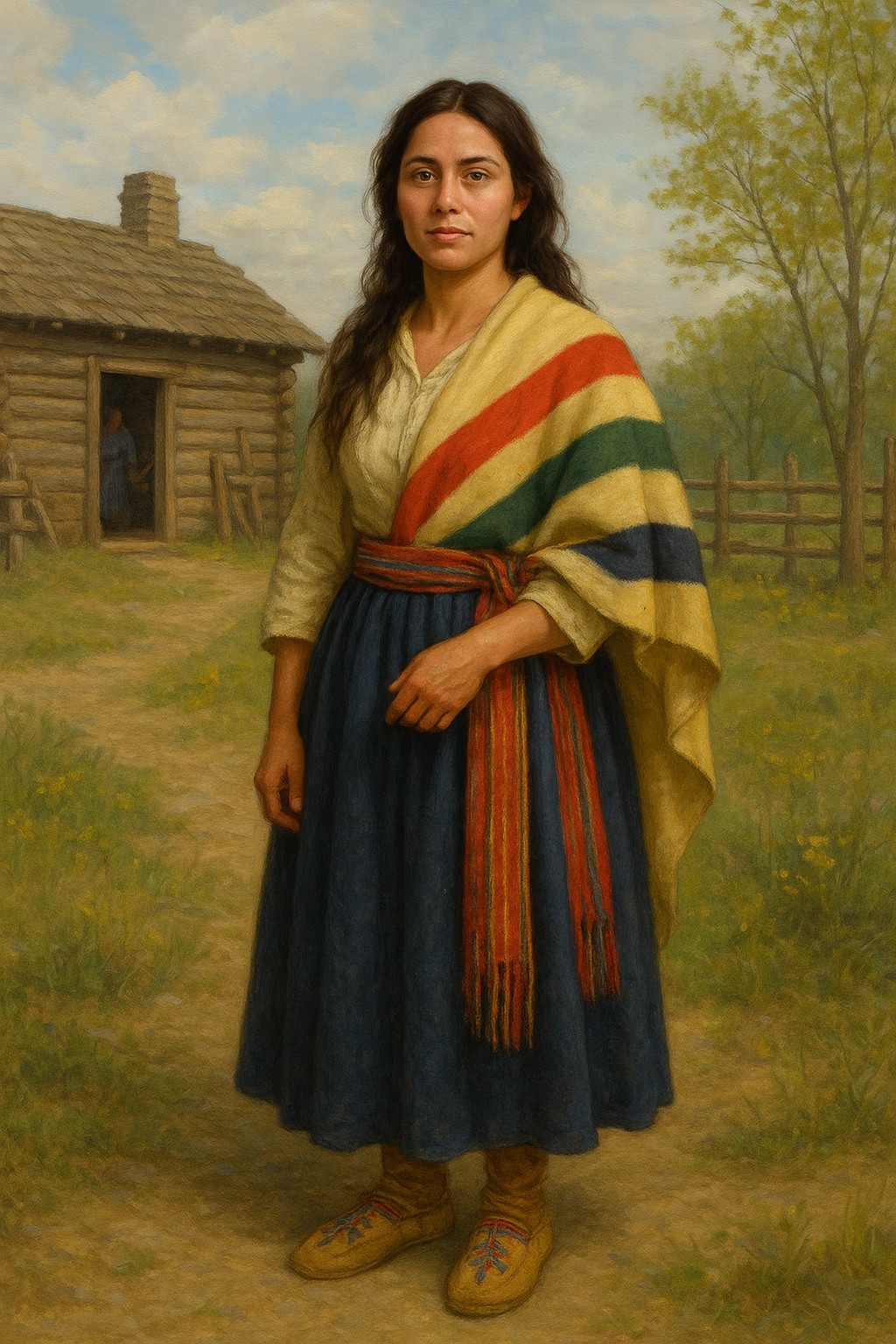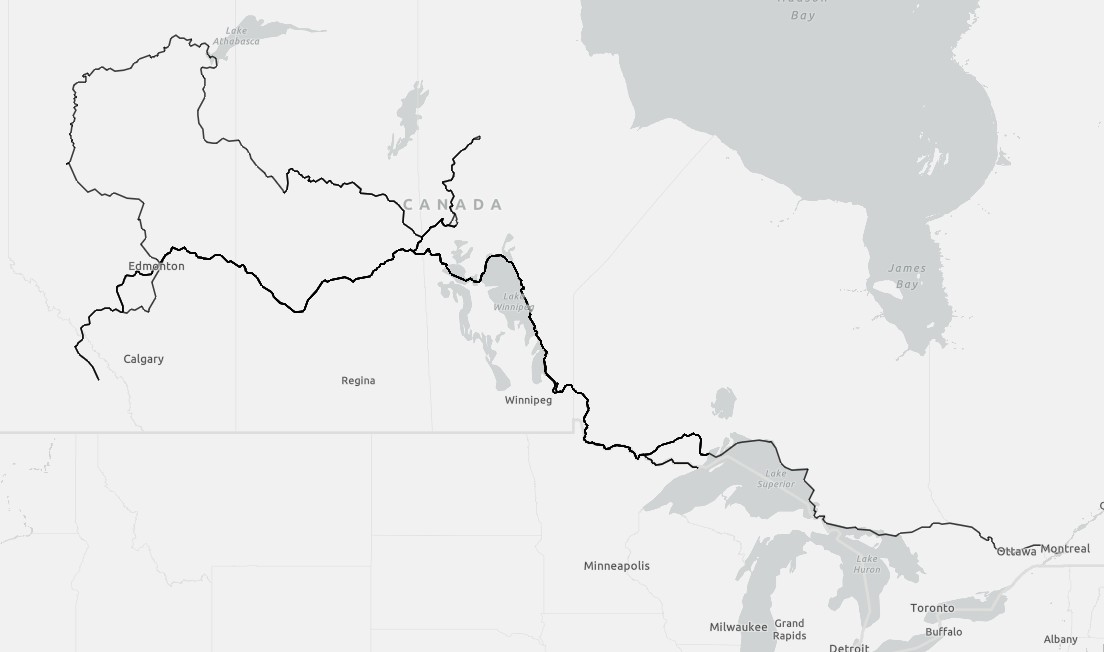The Travels of Charlotte Small 1799-1812

An artistic rendition of Charlotte Small
Wife and lifelong partner of explorer David Thompson
Charlotte Small, born in 1785 near Isle-a-la-Crosse, Saskatchewan was of Cree and Scottish heritage. Her life story is closely tied to the fur trade era and the age of exploration in western Canada, as she was the lifelong companion of the fur trader, explorer and surveyor David Thompson. Though often overlooked in traditional accounts of exploration, Charlotte played a vital role in supporting Thompson’s work and raising their large family across the shifting landscapes of north western North American.
Life of Exploration
Charlotte was not a passive partner. She traveled thousands of kilometers with David, often with young children in tow. She accompanied him on arduous journeys across the Rocky Mountains, through the plains, and along the great rivers of western Canada. Her Cree heritage and knowledge of Indigenous languages and customs were invaluable. Charlotte acted as an interpreter and cultural mediator, helping Thompson maintain relationships with First Nations communities, which were essential for safe passage and trade. David Thompson died in 1857 at the age of 86. Just three months later, on May 4, 1857, Charlotte also passed away. They are buried side by side in Mount Royal Cemetery in Montreal, a testament to their lifelong bond.
How Far Did Charlotte Travel
As part of the David Thompson Bicentennial Commemorations, the question of just how far Charlotte had traveled was raised. Through Leanne Playter Korsos’ extensive research, it was determined that Charlotte had travelled more than 20,000 Km by foot, canoe and horse. From her research in 2004, a map was created entitled “Moccasin Miles ~ The Travels of Charlotte Small 1799-1812”.
Recognition
In 2006, Jennifer S.H. Brown, professor emeritus, composed an Agenda Paper identifying Charlotte Small as a person of historical importance. In the paper, Leanne’s research and the map “Moccasin Miles” was utilized as one example of Charlotte’s importance to Thompson. In 2008, Parks Canada, advised by the Historic Sites and Monuments Board of Canada, formally recognized Charlotte Small as a National Historic Person. She was acknowledged for being a “representative of the many Indigenous women who formed significant partnerships with fur traders during the 18th and 19th centuries.”
A commemorative plaque was later unveiled in her honour at Rocky Mountain House National Historic Site in Alberta. The plaque text was approved by the Historic Sites and Monuments Board in 2011. The plaque ceremony took place on July 1, 2014, when it was announced that Charlotte Small was a “crucial figure in the fur trade and exploration of western Canada, and especially as an exemplar of the many Aboriginal women whose contributions were historically overlooked.”
Charlotte Small’s travels were researched from published journals and other records. From the completed research, spatial data was created and is organized into the fields Year, Route, Leg, Departed, Arrived, Origin, and Destination. The data is in ESRI shapefile format and can be acquired HERE.
A Map of Charlotte Small’s Travels 1799-1812

